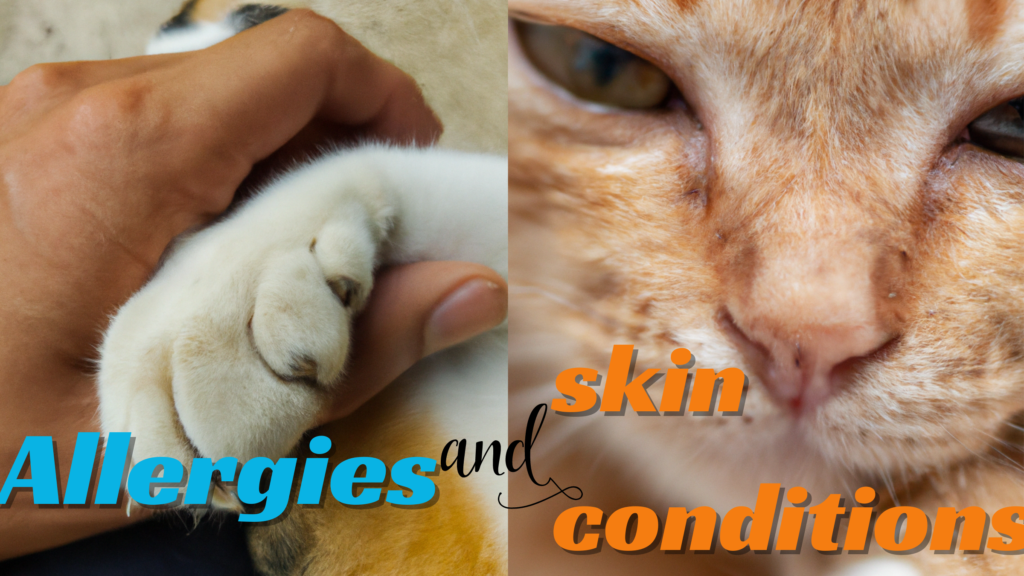Introduction
Cats are mysterious creatures, often leaving their owners perplexed by their behaviors. One such puzzling phenomenon is the appearance of tiny blood spots in various places around the house.
These enigmatic crimson droplets can be found on furniture, carpets. And even on your own clothing, leaving pet owners bewildered and concerned for their feline companions.
While it may seem alarming at first glance, there are a multitude of reasons behind this intriguing occurrence. That range from the benign to the more serious.
So if you’ve ever wondered why your cat leaves these tiny blood spots. Buckle up as we delve into the 7 ultimate reasons of why your cat leaves tiny blood spots that might just shed some light on this peculiar behavior.
Understanding your cat’s behavior

Understanding your cat’s behavior is essential for maintaining their health and wellbeing.
When it comes to the presence of tiny blood spots in your cat’s urine. It’s important to recognize that this can be a sign of various underlying issues.
While blood in the urine can be alarming. It’s crucial to observe your cat’s behavior and habits to understand the potential causes.
One important aspect to consider is the possibility of bladder infections in cats. Cats are prone to developing urinary tract issues, which may lead to blood in their urine.
By observing your cat’s behavior such as frequent urination, straining while urinating, or unusual vocalizations during litter box use, you can gain valuable insights into their health status.
Understanding these behavioral cues can prompt you to seek veterinary care promptly, potentially preventing more serious complications.
Additionally, being mindful of key indicators such as changes in your cat’s water consumption and litter box habits can provide valuable clues about potential health concerns.
As a responsible pet owner, staying attuned to subtle shifts in your cat’s behavior will not only help detect health issues early but also strengthen the bond between you and your feline companion.
Why is my cat leaving tiny blood spots in the sink?
Flea infestation and skin irritation.
One of the leading causes of tiny blood spots on your cat could be a flea infestation.
These pesky parasites not only cause discomfort for your feline friend but also lead to skin irritation, which can result in scratching and minor bleeding.
The saliva from flea bites can cause allergic reactions, leading to intense itching and increased risk of open wounds.
It’s important to address this issue promptly as flea infestations can quickly spiral out of control, affecting both your cat’s well-being and the overall hygiene of your home.
Furthermore, constant scratching due to flea bites can also lead to secondary skin infections, exacerbating the problem even further.
It’s vital for pet owners to stay vigilant in preventing and treating fleas, not just for the comfort of their beloved cats but also to maintain a clean and healthy living environment for all occupants.
Regular grooming sessions along with veterinarian-recommended flea prevention products are essential steps in safeguarding your cat against these blood-sucking pests.
Scratching and grooming habits
Cats are notorious for their meticulous grooming habits, which involve licking, scratching, and cleaning themselves.
However, these seemingly benign behaviors can lead to tiny blood spots when taken to the extreme. Excessive scratching due to skin irritations or allergies can cause small wounds that result in spotting.
Additionally, overzealous grooming can cause a cat to break the delicate blood vessels in its skin, leading to tiny droplets of blood being left behind.
To prevent your cat from leaving tiny blood spots around the house, it’s crucial to address any underlying skin issues that may be causing excessive scratching.
Regular vet check-ups and a balanced diet can help maintain healthy skin and reduce the likelihood of irritation.
Providing appropriate outlets for your cat’s natural grooming instincts, such as regular brushing and interactive toys, can also help redirect their behavior away from excessive self-grooming.
Understanding your cat’s scratching and grooming habits is imperative for maintaining their overall health and well-being.
By staying proactive and addressing any potential issues early on, you can ensure that your feline friend remains comfortable and free from the discomfort of itchy skin or excessive grooming.
Why Cats Love to Lick Each Other? 7 Surprising Reasons
Allergies and skin conditions

Allergies and skin conditions may be contributing to your cat leaving tiny blood spots. Cats can develop allergies to various environmental factors such as pollen, dust mites, or certain foods, which may lead to itchy skin and excessive scratching.
This can result in tiny blood spots from broken skin capillaries. Furthermore, cats can also suffer from skin conditions like feline acne or miliary dermatitis, causing discomfort and leading them to excessively groom or scratch themselves.
It is essential for cat owners to recognize the signs of allergies and skin conditions in their pets and seek veterinary advice promptly.
A thorough examination by a veterinarian can help identify the cause of the issue and determine an appropriate treatment plan.
Additionally, providing a clean environment, reducing exposure to potential allergens, and addressing any dietary concerns can greatly alleviate the problem for your cat.
Trauma or injury
Trauma or injury. While cats are typically graceful and agile creatures, accidents and injuries can still happen.
Tiny blood spots may indicate that your cat has suffered a small scrape, cut, or bruise. Cats love to explore and play, often getting into mischief that can lead to minor injuries.
Even a tussle with another animal or a sharp object in the environment could result in tiny blood spots.
It’s important to carefully check your cat for any signs of trauma or injury if you notice these blood spots.
Ensure that there are no foreign objects stuck in their paws or fur, and monitor their behavior for any signs of pain or discomfort.
Even seemingly minor injuries should be treated promptly to prevent infection and ensure your feline friend’s well-being.
Remember, even the most independent cats may need some extra TLC when they’re feeling under the weather.
External parasites such as ticks
Dealing with external parasites such as ticks can be a major source of concern for cat owners.
These tiny bloodsuckers not only pose a direct threat to your cat’s health but also carry the risk of transmitting diseases, some of which can even affect humans.
The presence of ticks often goes unnoticed until they have already fed on your cat’s blood, leaving behind tiny blood spots as evidence.
This means that regular grooming and thorough inspections are essential to catch these pests before they can cause any harm.
Ticks are not just a nuisance; they can also lead to serious health issues for your feline companion. From skin irritation and hair loss to more severe conditions like tick-borne illnesses, the consequences of unchecked tick infestations can be detrimental.
Therefore, staying vigilant and taking preventative measures like using tick control products or keeping your cat indoors during peak tick seasons is crucial in protecting their well-being from these pesky parasites.
Conclusion: Taking care of your cat’s health
In conclusion, these were 7 Ultimate Reasons: Why Your Cat Leaves Tiny Blood Spots! Taking care of your cat’s health is an essential responsibility for any pet owner.
Regular check-ups with a veterinarian, proper nutrition, and engaging in regular play and exercise are all crucial aspects of keeping your feline friend healthy and happy.
It’s important to pay attention to any changes in behavior or appearance and seek professional help immediately if you notice any concerning symptoms.
Moreover, maintaining a clean environment for your cat is also key to their overall health. Regularly cleaning their litter box, providing a comfortable resting place, and keeping their living space free from potential hazards are all crucial in promoting well-being.
Additionally, being mindful of potential allergens or toxins in your home can also contribute to your cat’s health.
By taking proactive measures to provide a safe and nurturing environment for your cat, you significantly decrease the likelihood of them developing health issues.
These 7 Ultimate Reasons of Why Your Cat Leaves Tiny Blood Spots! helps you a lot in taking good care of your cat.
FAQs
Q: Why your cat leaves tiny blood spots around the house?
A: Your cat may be suffering from a medical condition such as flea infestation or skin irritation.
Q: Is it normal for my cat to have tiny blood spots in its urine?
A: No, this could indicate a urinary tract infection or other health issue that requires attention.
Q: Can stress cause my cat to have tiny blood spots?
A: Yes, stress can lead to behavior changes and physical symptoms in cats, including blood spotting.
Q: What should I do if I notice tiny blood spots on my cat’s fur?
A: Take your cat to the vet for a thorough examination and diagnosis.
Q: Are there any home remedies to treat tiny blood spots on my cat’s skin?
A: It’s best to consult with a veterinarian before attempting any home treatments for your cat’s condition.
Q: How can I prevent my cat from developing tiny blood spots in the future?
A: Regular grooming, flea prevention, and keeping your cat’s environment clean can help reduce the risk of blood spotting.
Q: Should I be concerned if my elderly cat suddenly starts leaving tiny blood spots?
A: Yes, sudden changes in behavior or health in older cats should always be evaluated by a vet.
